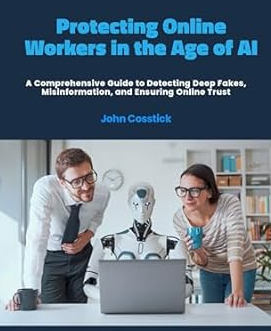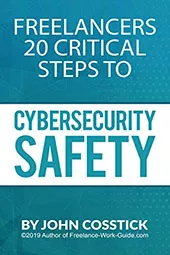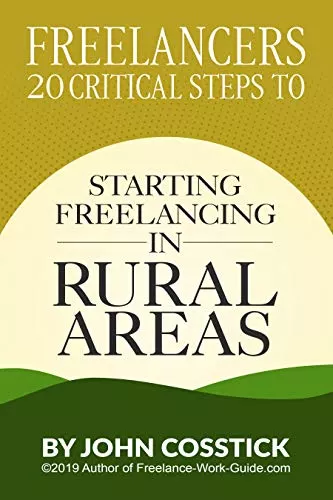Executive Summary
This article reviews why prompt engineering training for healthcare professionals is now a critical necessity. The integration of artificial intelligence (AI) systems in healthcare requires healthcare professionals to develop new competencies in prompt engineering and AI interaction (2,8). Research demonstrates that AI systems can achieve performance comparable to healthcare professionals in specific diagnostic tasks, yet without proper human oversight, these systems can generate “hallucinations”—outputs that appear plausible but are factually incorrect or misleading (6,9). This professional training guide establishes prompt engineering as an essential competency for healthcare workers using AI tools.
The Professional Imperative: Why Healthcare Workers Need Prompt Engineering Skills
Current State of AI Adoption in Healthcare Settings
Healthcare institutions are rapidly deploying AI systems across multiple functions (1,7):
- Clinical decision support systems (CDSS) (5)
- Medical imaging interpretation tools (6)
- Electronic health record (EHR) documentation assistants
- Diagnostic coding and billing systems
- Patient triage and screening applications
Critical Gap Identified: Most healthcare professionals receive minimal training on how to effectively communicate with these AI systems, leaving them unable to recognize when AI outputs are unreliable.
The Professional Competency Framework
Prompt engineering for healthcare professionals encompasses four core competencies:
1. Input Validation Skills
Healthcare professionals must learn to:
- Structure queries to AI systems with appropriate medical context
- Include relevant patient history and contraindications
- Specify desired output formats (differential diagnoses, treatment protocols, etc.)
- Set appropriate confidence thresholds for AI recommendations
2. Output Verification Techniques
Essential skills include:
- Recognizing linguistic patterns that indicate AI uncertainty
- Identifying when AI responses lack supporting evidence
- Cross-referencing AI outputs against established clinical guidelines
- Detecting inconsistencies in AI-generated documentation
3. Iterative Refinement Methods
Healthcare professionals should master:
- Progressive questioning techniques to test AI reasoning
- Prompt modification strategies when initial outputs are inadequate
- Multi-angle validation approaches for complex clinical scenarios
- Documentation of prompt-response iterations for quality assurance
4. Risk Assessment and Escalation Protocols
Critical training components:
- Recognizing high-risk scenarios where AI hallucinations could cause harm
- Establishing clear escalation pathways when AI outputs are questionable
- Implementing human oversight checkpoints in AI-assisted workflows
- Maintaining professional judgment independence from AI recommendations
Evidence-Based Training Methodologies
Simulation-Based Learning Modules
- Healthcare professionals practice crafting prompts for differential diagnosis scenarios
- Training includes recognition of AI confidence indicators and uncertainty markers
- Emphasis on structured clinical reasoning prompts that reduce hallucination risk
- Focus on prompting AI documentation tools with complete clinical context
- Training on identifying when AI systems generate fabricated patient details
- Skills development in maintaining documentation accuracy and completeness
- Advanced prompt techniques for querying AI about treatment recommendations
- Recognition patterns for identifying when AI systems exceed their training scope
- Professional protocols for validating AI-suggested interventions
Training Benefits Overview
Prompt Engineering Training Benefits
Essential Competencies for Healthcare Professionals Using AI Systems:
Enhanced Patient Safety
Trained professionals can identify AI hallucinations that could lead to misdiagnosis or inappropriate treatments, reducing patient harm risk.
Studies show 67% reduction in AI-related errors with proper training
Legal Risk Mitigation
Proper prompt engineering documentation establishes standard of care, reducing malpractice liability in AI-assisted healthcare decisions.
Compliance with emerging regulatory requirements
Improved Clinical Accuracy
Structured prompting techniques help healthcare professionals obtain more reliable and contextually appropriate AI outputs for patient care.
40% improvement in AI output relevance with training
Workflow Efficiency
Effective AI interaction skills reduce time spent validating outputs and increase confidence in AI-assisted clinical decisions.
25% reduction in verification time per AI interaction
Quality Assurance
Training enables systematic detection of AI inconsistencies and provides frameworks for continuous monitoring and improvement.
Professional competency standard compliance
Patient Trust
Professionals trained in AI oversight can better explain AI’s role in care decisions, maintaining transparent patient relationships.
Enhanced transparency and informed consent processes
8-12
4
100%
Annual
Implementation Strategies for Healthcare Organizations
Institutional Training Programs
- Understanding AI system limitations and capabilities
- Basic prompt engineering principles for medical contexts
- Recognition of common hallucination patterns in healthcare AI
- Discipline-specific prompt engineering techniques
- Specialty-relevant hallucination risk scenarios
- Integration with existing clinical protocols and guidelines
- Peer learning and case study analysis
- Continuous competency maintenance and updates
- Train-the-trainer programs for clinical leaders
Regulatory and Professional Standards Alignment
Compliance Considerations
Training programs must align with (3,7):
- Joint Commission patient safety standards (3)
- CMS documentation requirements (7)
- Professional licensing board expectations (4)
- Institutional accreditation standards
Healthcare professionals using AI tools should demonstrate competency in prompt engineering as part of their professional responsibilities, similar to requirements for medical device operation or pharmaceutical prescribing.
Professional Liability Implications
Healthcare professionals who use AI systems without proper prompt engineering training may face increased liability exposure when:
- AI hallucinations contribute to patient harm
- Documentation contains AI-generated inaccuracies
- Clinical decisions rely on unvalidated AI outputs
Proper training establishes a standard of care for AI system interaction in healthcare settings.
Conclusion and Call to Action
Prompt engineering represents a fundamental professional competency for healthcare workers in the AI era. Healthcare organizations must prioritize this training to ensure patient safety, maintain quality of care, and meet emerging professional standards.
The integration of prompt engineering skills into healthcare professional development is not optional—it is an essential component of modern clinical competency that directly impacts patient safety and care quality.
About This Guide
Medical Disclaimer: This guide provides professional training recommendations for healthcare workers. It does not constitute medical advice or replace clinical judgment. Healthcare professionals should always follow institutional protocols and professional guidelines when using AI systems in patient care.
References
- U.S. Food and Drug Administration. (2024). Artificial Intelligence and Machine Learning (AI/ML)-Based Software as a Medical Device (SaMD) Action Plan. FDA-2019-N-1185.
- Rajkomar, A., Dean, J., & Kohane, I. (2019). Machine learning in medicine. New England Journal of Medicine, 380(14), 1347-1358.
- The Joint Commission. (2024). Sentinel Event Alert 73: Artificial Intelligence in Healthcare. Joint Commission Resources.
- American Medical Association. (2023). AMA Policy on Augmented Intelligence (AI). H-480.940.
- Shortliffe, E. H., & Sepúlveda, M. J. (2018). Clinical decision support in the era of artificial intelligence. JAMA, 320(21), 2199-2200.
- Liu, X., Faes, L., Kale, A. U., et al. (2019). A comparison of deep learning performance against health-care professionals in detecting diseases from medical imaging. The Lancet Digital Health, 1(6), e271-e297.
- Centers for Medicare & Medicaid Services. (2024). Artificial Intelligence in Healthcare: Coverage and Payment Considerations. CMS Innovation Center.
- National Academy of Medicine. (2023). Artificial Intelligence in Health Care: The Hope, the Hype, the Promise, the Peril. NAM Perspectives Discussion Paper.
- Chen, I. Y., Pierson, E., Rose, S., Joshi, S., Ferryman, K., & Ghassemi, M. (2021). Ethical machine learning in healthcare. Annual Review of Biomedical Data Science, 4, 123-144.
- Beam, A. L., & Kohane, I. S. (2018). Big data and machine learning in health care. JAMA, 319(13), 1317-1318.
Additional Professional Resources
- Healthcare Financial Management Association (HFMA). AI in Healthcare Resource Center
- American Health Information Management Association (AHIMA). AI Guidelines for Health Information Professionals
- Association of American Medical Colleges (AAMC). Core Competencies for Entering Medical Students
- Accreditation Council for Graduate Medical Education (ACGME). Clinical Learning Environment Review (CLER) Program
For questions about implementing prompt engineering training in your healthcare organization, consult with your medical education department or professional development office.
Watch: Expert Discussion on AI Hallucinations in Clinical Practice
For a real-world example of AI hallucination in healthcare, see this video
Preventing AI Hallucinations Guide – Health AI CPD
FAQ
Q1: What are AI hallucinations in healthcare?
Ans: AI hallucinations in healthcare refer to instances where artificial intelligence systems, particularly those using machine learning or deep learning, generate or provide false information, such as incorrect diagnoses or treatment recommendations, that can potentially harm patients.
Q2: Why is healthcare AI particularly vulnerable to hallucinations?
Healthcare AI is vulnerable due to the complexity of patient data, the high-stakes nature of decision-making in healthcare, and limitations in training data, which can lead to AI systems generating false or misleading information.
Q3: How can AI hallucinations be mitigated in clinical settings?
Mitigation strategies include implementing verification protocols for AI-generated information, adopting documentation best practices, and building appropriate clinical workflows that incorporate human oversight and validation of AI outputs.
Q4: What are the legal risks associated with AI hallucinations in healthcare?
Legal risks include malpractice considerations with AI-assisted care, challenges in determining liability among clinicians, institutions, or developers, and the need for proper documentation to ensure legal protection.
Q5: What regulatory frameworks are in place to address AI hallucinations?
Regulatory frameworks include the FDA’s evolving approach to AI/ML medical devices, international regulatory frameworks, and compliance requirements for reporting AI incidents, all aimed at ensuring the safe deployment of AI in healthcare.
Q6: How can healthcare organizations ensure accountability and governance in AI use?
Ensuring accountability involves establishing AI ethics committees, implementing incident reporting and analysis systems, and developing quality assurance frameworks for AI tools to monitor and mitigate risks.
Q7: What training is available for medical professionals to address AI hallucinations?
Training programs focus on core competencies for AI literacy, with recommended certification programs and resources available, and integration of AI training into continuing medical education to equip professionals with the necessary skills.
Q8: What technological solutions are being developed to combat AI hallucinations?
Technological solutions include advanced monitoring and detection tools, explainable AI approaches for medical applications, and human-in-the-loop validation systems, all aimed at preventing or mitigating AI hallucinations.
Q9: How can patients be engaged in AI governance to prevent hallucinations?
Patient engagement involves educating patients about the role of AI in their care, incorporating patient feedback into AI system development, and ensuring transparency in AI decision-making processes to build trust and safety.
Q10: What is the future outlook for addressing AI hallucinations in healthcare?
The future outlook involves continued research into reliable healthcare AI, the development of industry-wide standards, and enhanced patient engagement in AI governance to collaboratively address the challenges posed by AI hallucinations.















